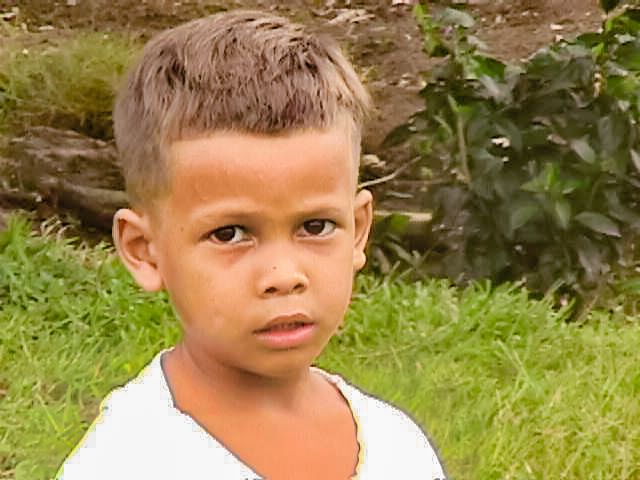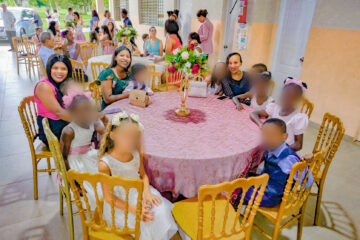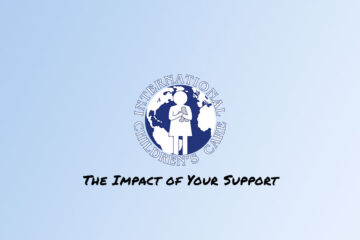Download these Fast Facts about the Dominican Republic in this two-page flyer by clicking the button. Thank you for making a difference in the lives of children!

- Population: 10,734,247
- Official Language: Spanish
- Capital City: Santo Domingo
- Santo Domingo was the first Spanish settlement in the Americas, founded four years after Columbus landed in 1492.
People of the Dominican Republic
The racial composition of the republic is predominantly of mixed European and African ancestry. Today, there are few Amerindian people. This is because of disease, warfare, and the effects of forced labor shortly after the arrival of the first Europeans.
Immigrants from all around the world joined the colonizing whites, mostly Spaniards, in the 19th and 20th centuries. This mostly included immigrants from East Asia and from European countries such as France, England, and Germany. In addition, small numbers of Sephardic Jews and Middle Easterners also immigrated.
The exact African heritage of the large black population is unknown. Many of them arrived with, or soon after, the conquistadors. They served as slaves in the mines and the early sugar enterprises. Today, dark-skinned people are still more prevalent among the lower socioeconomic classes, as opposed to their more affluent compatriots.

Culture and Life Styles of the Dominican Republic
The Spanish language is predominant in Dominican Republic, although English is becoming common. This is due to the massive emigration to the United States.
Most of the population is Roman Catholic. Catholicism exerts a marked influence on cultural life at all levels. Early Spanish and African communities now take root in the cultures of rural populace.
It is difficult to define any particular and unique cultural tradition that may be labeled Dominican. Music, especially when accompanied by dancing, is important at all social levels and in all regions. The Roman Catholic church largely defines major holidays. Yet, the way in which they are celebrated reveals a mixture of official church and ancient folk traditions.
A generally unsanitary environment, inadequate health services, and poor nutrition characterize health conditions among the poorer classes in both rural and urban zones. As a result, infectious and parasitic diseases are common, and infant mortality is high. Hospital and trained medical personnel are available only in the larger cities and towns.
Social conditions in the Dominican Republic resemble those found in other underdeveloped Latin-American nations. Small farmers rarely eke out more than a subsistence crop and most often must supplement this by the sale of handicrafts; products include baskets, pottery, rocking chairs, straw hats, and foodstuffs.
Education in the Dominican Republic
The more isolated the population, the less accessible are educational institutions. That being said, it is free and compulsory for children between the ages of 7 and 14 to attend school. Children first attend six years of primary schooling. Then, they go on to a two-year intermediate school and a four-year secondary course. Sadly, few lower-income students succeed in reaching this level. This is because the system encourages middle and upper-income students to prepare for university by design. Wealthier students often attend religious-sponsored private schools.
Housing in the Dominican Republic
One of the most serious problems in the Dominican Republic is housing.
Housing is provided for temporary workers on the sugar plantations in the south. Yet, this barrack-like housing is not ideal. More permanent employees frequently have their own small huts, or bohios, often on company-owned land. These may be little more than a lean-to of palm leaves and bamboo. Others, more sturdy, may have double-reed walls filled with rubble and plastered with mud.
In the Cibao, a relatively prosperous zone, houses are built solidly of palm board or pine and are frequently painted and decorated, with shutters and lintels in contrasting colors. Roofs are most often covered with sheets of zinc or tin but, in poorer households, may be thatched. A prosperous family may have a concrete floor, but most are of packed earth.
In the cities are the squatter settlements and poverty-stricken inner-city ghettos characteristic of most rapidly urbanizing underdeveloped countries. cardboard, discarded inner tubes, and any other materials the inhabitants may scavenge, often build a dwelling.
Also in the cities are districts with well-appointed modern houses, occupied by members of the new commercial and industrial elite, as well as by the more traditional land-based oligarchy. Government programs, often funded with international loans, have financed housing construction for lower and middle-income families.
Economy in the Dominican Republic
Agriculture continues to be the basis of the Dominican Republic’s economy, although that sector has been giving way to manufacturing. During the Trujillo regime from 1930 to 1961, the Trujillo family largely controlled both agriculture and industry and therefore, the economy.
Since 1961, most Trujillo enterprises have remained under governmental control. However, private industry has outstripped these in contributing to the gross national product, and there has been considerable diversification in recent years. As in many other Latin-American countries, this has been made possible through foreign loans, which have placed the country in serious debt.
How you Can Help
The mission of International Children’s Care is to bring hope and the gift of a new life to the orphaned and abandoned children of the world. Through sponsorships, donations and volunteer service, you can give these children the chance in life that they so richly deserve.


